Should the Rosebank oilfield get the go ahead?
- Published
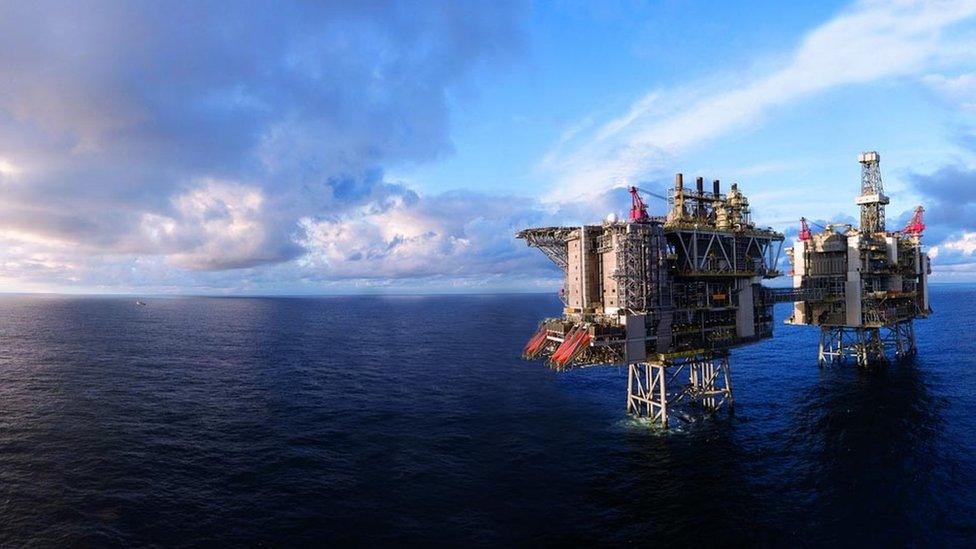
Equinor hope to develop Rosebank close to BP's Clair Ridge development (pictured) which has been in operation since 2018
Rosebank, the largest untapped oil field in the UK, is off the coast of Shetland. Its approval by regulators is expected soon and production could begin as early as 2026.
Should it go ahead? If it does, what will be the environmental impact? If it doesn't, what's the alternative?
Shetland is a perfect place to explore these questions. Leaving aside the environmental impact of the 500 million barrels of oil it could produce, just powering Rosebank and its sister fields would use the equivalent of half of the energy being produced by a giant and controversial new windfarm currently being built on Shetland.

Shetland is different.
The archipelago of 100 islands straddling the North Sea and the Atlantic Ocean became part of Scotland in 1472 but never lost its Norse links.
This week, islanders celebrated their heritage in the old harbour of Scalloway in an event to mark the 2023 Tall Ships race.
Locals dressed in tunics, capes and feather-tipped helmets brandished axes and hurled burning torches into a replica of a Viking longboat.

But any visitor who thought that the islands were stuck in the past would have been badly mistaken.
This may have been a land of farmers and fishers until the 1970s but the discovery of North Sea oil, external changed everything.
The construction of a terminal at Sullom Voe, an inlet in the north of the largest island, brought not just jobs but a fee for every barrel of oil it handled.
That meant the local council could set up an investment fund, which continues to pay for high-quality public services such as roads, care homes and sports facilities.
In the main town of Lerwick - 400 miles from Oslo; 600 miles from London - a smart leisure centre stands alongside a stylish school.
Environmentalists on the islands acknowledge that Shetland has done well from hydrocarbons but say it is time to cut the cord.

Alex Armitage, a councillor from the Scottish Green Party, who is also the islands' consultant paediatrician, describes oil and gas as a "sunset industry".
He says the wildfires which have ravaged the Greek island of Rhodes in recent days underline the urgency of accelerating the move to renewable energy by blocking new drilling in the North Atlantic.
The UK oil and gas regulator is currently considering whether or not to approve drilling in the Rosebank oil field, 80 miles west of Shetland, one of the biggest untapped reserves in British waters, containing between 300 million and 500 million barrels of oil.
Earlier this week, UK Energy Security and Net Zero Secretary Grant Shapps said the UK should "max out" its remaining reserves, external.
There are plenty of Shetlanders who agree with that stance.
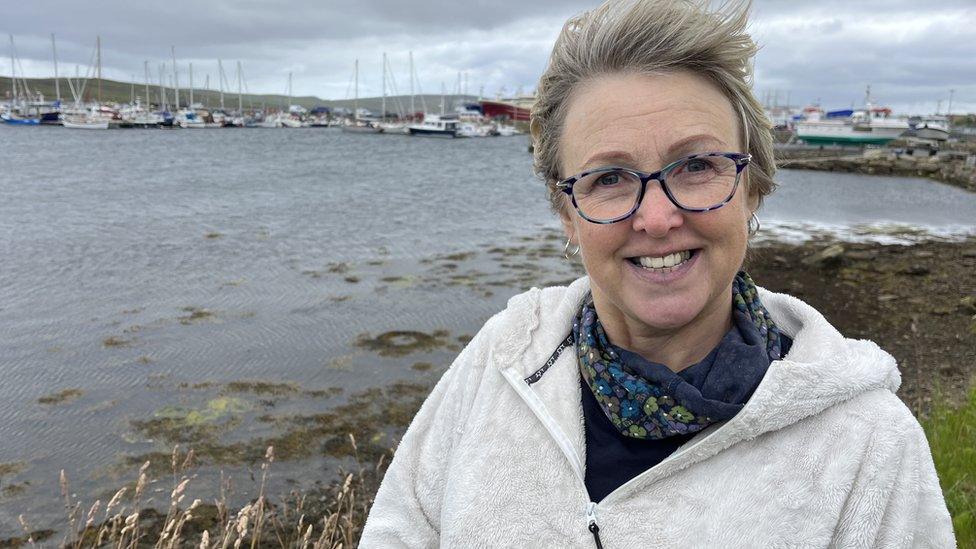
From the 1970s Arlene Robertson worked as a cook, a cleaner and a nurse at Sullom Voe. "I was part of that boom," she says.
These days Ms Robertson campaigns for the islands to have greater control of their own affairs as a member of a group called the Shetland Autonomy Action Team.
She is in favour of Rosebank.
"We all want a better climate. We all want a better world to live in but I think, realistically, we have to follow what's feasible, and shutting down oil and trying to import it from places like Russia doesn't make much sense to me," she says.

Dr Armitage disagrees. "The idea that [Rosebank] will support our UK national energy security is quite frankly preposterous," he says, pointing out that while some gas would be piped to Shetland, the oil would be pumped onto tankers at sea and exported "to Rotterdam or wherever else in the world it would be able to be sold to the highest bidder".
This week, the Norwegian oil company Equinor, which is the principal developer of Rosebank, underlined its "clear expectation" that the project would move forward.
The state-controlled firm's chief financial officer, Torgrim Reitan, said he was "awaiting final conclusion on a couple of topics, and final approval from the regulators" and expected "some clarifications not too far into the future".

Greta Thunberg joined fellow climate campaigners in London on Friday to demand that the UK government rejects the huge Rosebank oil field
While those discussions continue, the energy mix on Shetland is already changing, with the construction by SSE Renewables of a giant wind farm called Viking.
More than 70 of the project's 103 turbines, which measure 155m (509ft) from ground to blade-tip, have been erected so far.
The blades should start spinning next summer, supplying electricity to the UK National Grid via a subsea cable linking the islands and the Scottish mainland for the first time.
SSE says the wind farm could provide enough electricity to power nearly 500,000 homes for the next 25 years.
Heather Donald, the company's director of onshore development and construction, says Shetland "will effectively decarbonise overnight with the flick of a switch," and provide "a case study" in energy transition for the rest of the UK.

Not all Shetlanders are convinced.
There are claims about disruption of the peat moorland where the windfarm is being built; talk of the "industrialisation" of a once-rugged landscape; and worries about how much the community will benefit economically.
Although Arlene Robertson and Alex Armitage have very different views on the pace of switching to renewable energy, they are united in a belief that the oil and gas boom is not being repeated.
Mr Armitage says Shetlanders are "shivering in their homes" because of high energy bills and Viking will not bring their costs down or bring significant extra funds to the community.
Ms Robertson agrees, saying: "I'm absolutely horrified at the poor deal that we've got. It's peanuts."
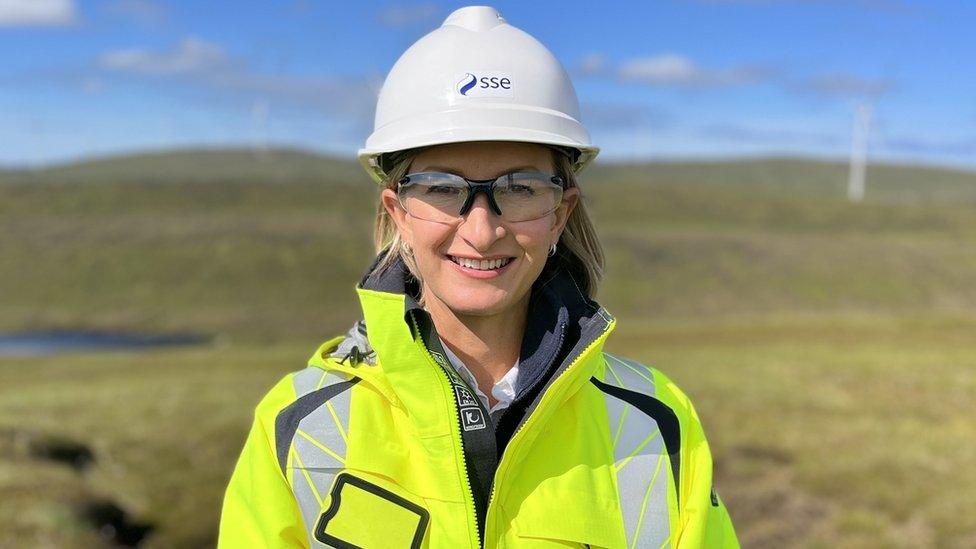
Heather Donald is SSE's director of onshore development and construction
Ms Donald of SSE denies Viking will have a negative effect on the peat.
She says the project is employing 400 people including 100 locals; and she insists it will help reduce bills and provide "the biggest community benefit fund of any renewable project in the UK".
"When the site goes into operation next year, it will be £2.2m every year for the duration of the wind farm," she adds.
But how will the electricity Viking produces be used?
The Offshore Petroleum Regulator for Environment and Decommissioning (Opred) is understood to be keen on the Rosebank oil field being powered by electricity supplied from shore rather than the traditional North Sea method of using gas or diesel generators.
Equinor, BP and Ithaca are exploring electrification for Rosebank; the existing Clair Ridge development; and, potentially, the Cambo field, which is currently in limbo.
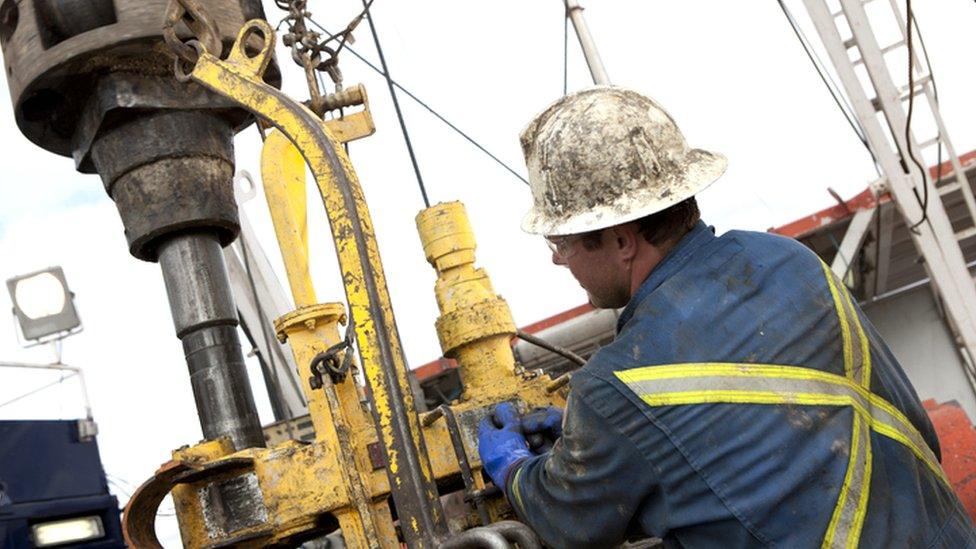
The BBC has been told that "onshore connection to Shetland" using "the oversupply of renewable energy" from the islands is an option under consideration.
Equinor has said that electrification of all three fields would require around 200 megawatts of power, external.
But environmental lawyer, Tessa Khan, of the pressure group Uplift, says using renewables to perpetuate the burning of fossil fuels "would be laughable if it wasn't so serious".
Uplift's analysts reckon the power required for the three fields could be closer to 250MW, equivalent to more than half of the potential output from the 443MW Viking wind farm.
"Rosebank will produce oil for export and will not boost the UK's energy security," insists Ms Khan.
"If it also ends up taking vast amounts of cheap, clean energy that could be used to power hundreds of thousands of homes and businesses, it will end up actively reducing the UK's energy security," she adds.
"We have no control over where the power goes," stresses Heather Donald of SSE Renewables.
Once the electricity is in the National Grid, she points out, it could be exported anywhere in the UK.
Nonetheless, the idea that a wind farm could provide electricity to half a million homes or end up powering several oil fields underlines the complexity of the UK's energy transition.
Related topics
- Published5 August 2022

- Published23 November 2018
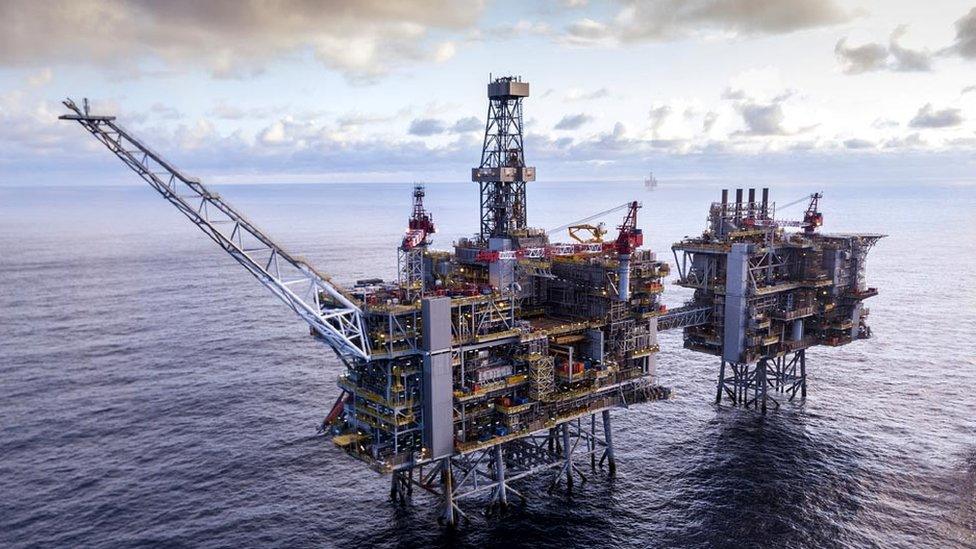
- Published5 May 2023
